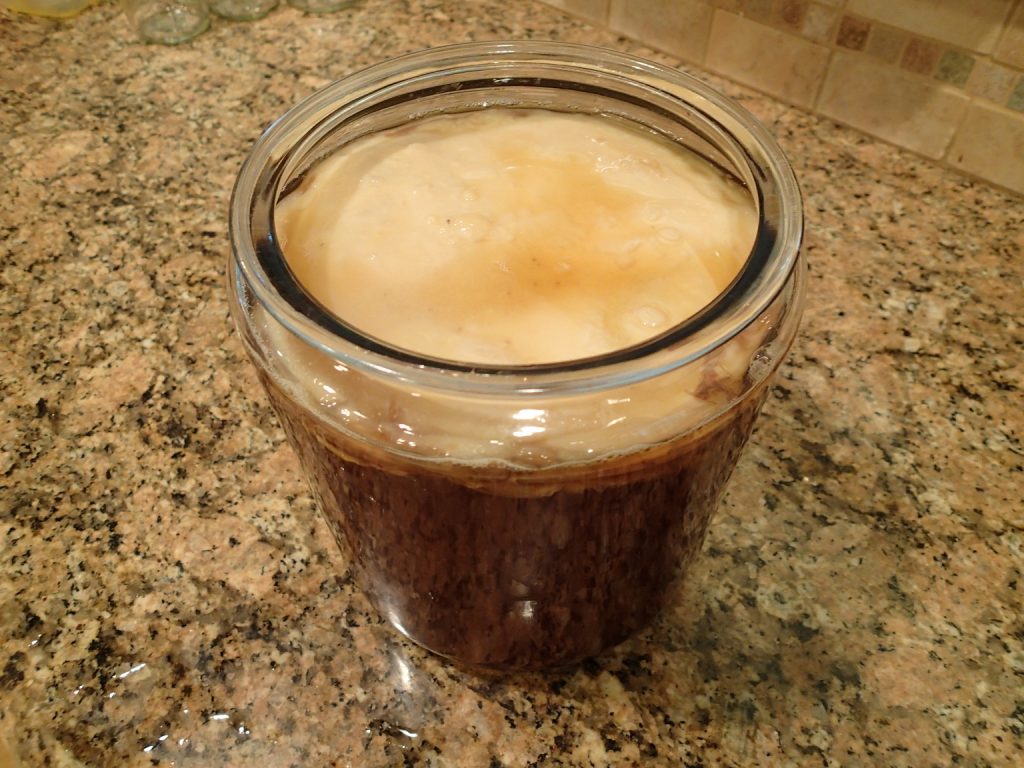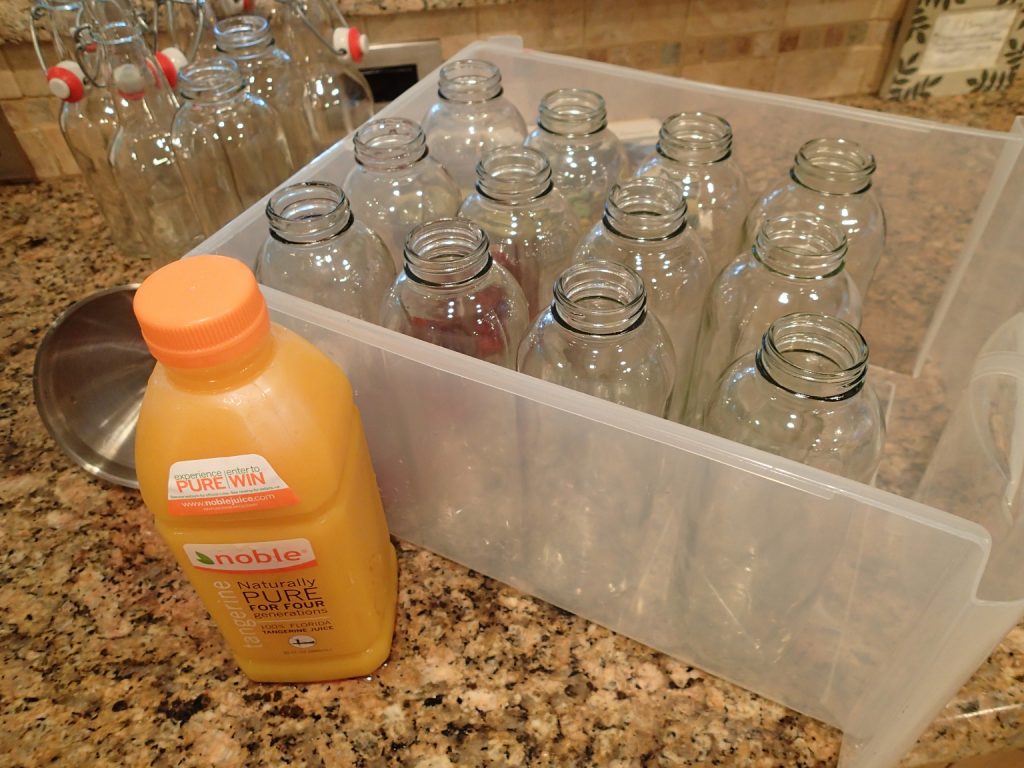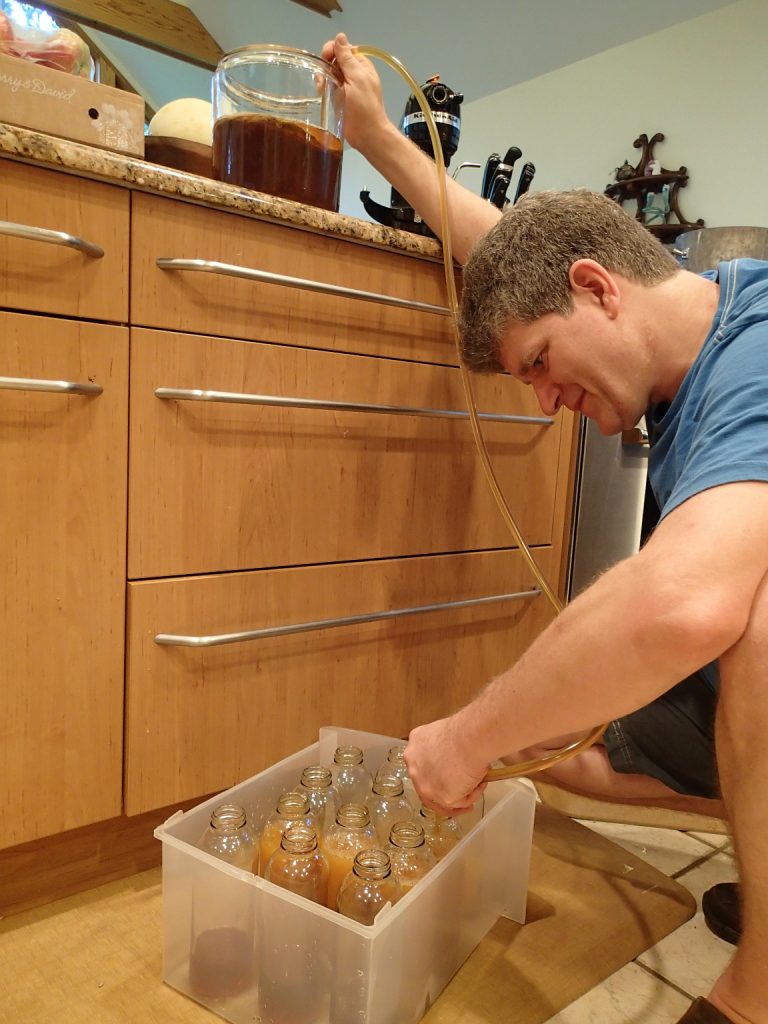I’ve been drinking Kombucha with my lunch lately. I buy it at the local cafe for $3.95 a 12oz bottle. Just today I realized I was breaking my own rules! This crap is expensive and mine would most likely taste better, be better for me, and fun to make! SO, I set out to make my own Homebrewed Kombucha SCOBY. I did a little research on the line and found this (from a surprising source):
Kombucha tea is made by fermenting sweetened black tea with a flat, pancake-like culture of yeasts and bacteria called the “Kombucha mushroom”. It is not actually a mushroom but is called one because of the shape and color of the sac that forms on top of the tea after it ferments. The culture used in Kombucha tea varies but consists of several species of yeast and bacteria. It may include Saccharomycodes ludwigii, Schizosaccharomyces pombe, Brettanomyces bruxellensis, Bacterium xylinum, Bacterium gluconicum, Bacterium xylinoides, Bacterium katogenum, Pichia fermentans, Candida stellata, and Torula species, among others. (quoted from The American Cancer Society).
Initial Attempts
hmmm. I don’t have any of those laying around the house so my first task will be to create a Kombucha SCOBY that I can use to ferment my sweet tea. A SCOBY is a Symbiotic Culture Of Bacteria and Yeast. Much like my other culture sources, this one comes from the supermarket as well. I bought another bottle of Kombucha and saved it to use for active culture. I’m starting with a very sweet tea:
- 2 quarts spring water
- 1 cup sugar
- 2 TBSP bulk tea leaves
Boil the water and add the tea. Steep for 5 minutes and strain. Add the sugar and stir to dissolve. The next step is the container. Remember the Anchor Hocking 1-gallon jars that I was using for vinegar jars? I’ll press one of these into service for the fermenter. Run it through the dishwasher to get it super clean. Next, rinse it with a cup of white vinegar. Detergent residue will kill, or at least, slow down the little critters in the SCOBY, but they love vinegar. So, give your fermenter a good rub-down and rinse with some vinegar. Now, add your tea and let it come to room temperature. Once the tea is around 65-75 degrees, you can add the bottle of commercial kombucha without fear of killing it. Final step. Find someplace warm and dark. Mine’s in my bookcase in the upstairs office. I figure in a couple of weeks I ought to have SOMETHING growing.
Update: May 8, 2014: No visible SCOBY. Pleasant aroma in the jar. Some visible yeast bubbles.
Update: May 22, 2014: Nothing. I added another bottle of commercial Kombucha. Something’s gotta’ grow soon. [fingers crossed]
Update: June 5th: Still nothing! Smells good, though. Maybe I need to start over…
Update: June 23rd
This failed. Post Mortem–lessons learned:
- I should have used 1/2 a cup of sugar. 1 cup is enough sugar for a gallon. Sugar can be used as a preservative. The sugar preserved the tea and prevented any bacteria from reproducing.
- I had a lid on the jar. I should have used cheesecloth or paper towels.
So, I broke down and bought a SCOBY from here (http://www.savvyteasandherbs.com/products/Kombucha-Tea-Starter-Culture.html)
I got it two days later and followed the simple instructions. Works like a charm! I will post more about this soon.
Success!
We moved and decided to pitch my SCOBY and grow a new one. After fermenting kombucha for a couple of weeks at the old house, I think I’ve got the knack. Care and feeding of a SCOBY is easy but, like making bread, you need to do it on the microbes’ terms. You cannot impose your will over the SCOBY. You cannot rush things. You can only create a harmonious environment for the microbes and let nature takes its course.
Boil half a gallon of water and add 4 tea bags and a 1/4 cup of sugar. I just found a box of PG Tips, a British tea that I love hot or cold, at the supermarket, so I’ve been using that for my sweet tea base. Once the tea is at room temperature, strain out the teabags and pour in one bottle of commercial kombucha. GT Kombucha is what they sell near here. Use the product locator on their website to find some near you. Secure a piece of cheesecloth over the opening of your fermenter and put it in the pantry for a week. The bacteria and yeast-like the dark with a little fresh air. Now wait. Try to leave it completely undisturbed It may take a longer or a shorter amount of time but you should see the slightest, thinnest little layer of cellulose forming on the surface At this point, you can feed it, and really get it going. Carefully, add another two quarts of sweet tea, made with 4 teas bags but this time with half of a cup of sugar. Let it sit for another week
Your SCOBY should be ready for action now. (Most of the sources say just to pour this starter batch down the drain, but I drank mine.) Pour off most of the liquid and add a gallon of sweet tea, at room temperature, made from boiling water, 8 tea bags, and a full cup of sugar. In a week, you will have a gallon of homemade kombucha!
I had been buying GT’s while this was getting started and was saving the bottles. The labels mostly peel off and a little Goo GONE will remove the glue. These bottles have a small foam seal in the lids that reseals nicely and stands up to the dishwasher nicely. The bottles themselves are bulletproof. I dropped an arm-load of them on the tile kitchen floor and didn’t even chip one! I thought for sure that I would be vacuuming up glass for a week, but they all just bounced around the floor.
When the kombucha is ready, contain your recycled bottles in a dishpan (to catch spills) and pour 4 oz of preservative-free juice into each one. I’ve been using Mango juice from Naked. Ocean Spray’s 100% Juice line is good, too. No added sugar. No preservatives in either one. This week, I found some 100% tangerine juice. Using a vinyl tube, siphon the kombucha into the bottles to within 1/2 an inch of full. Screw on the tops and store for a couple of days. This is the secondary ferment and gives the brew some nice carbonation. I keep mine in the pantry and have found that I can grab a room-temp bottle out of the pantry and pour it over ice to enjoy. I usually drink one or two a day, and by the time I’m out, it’s been a week and I’m ready to bottle up another batch!






Hello,
I love your videos! I’m very health conscious. Can I use Organic Raw Sugar? Will that work?
Thanks
Yes, of course!